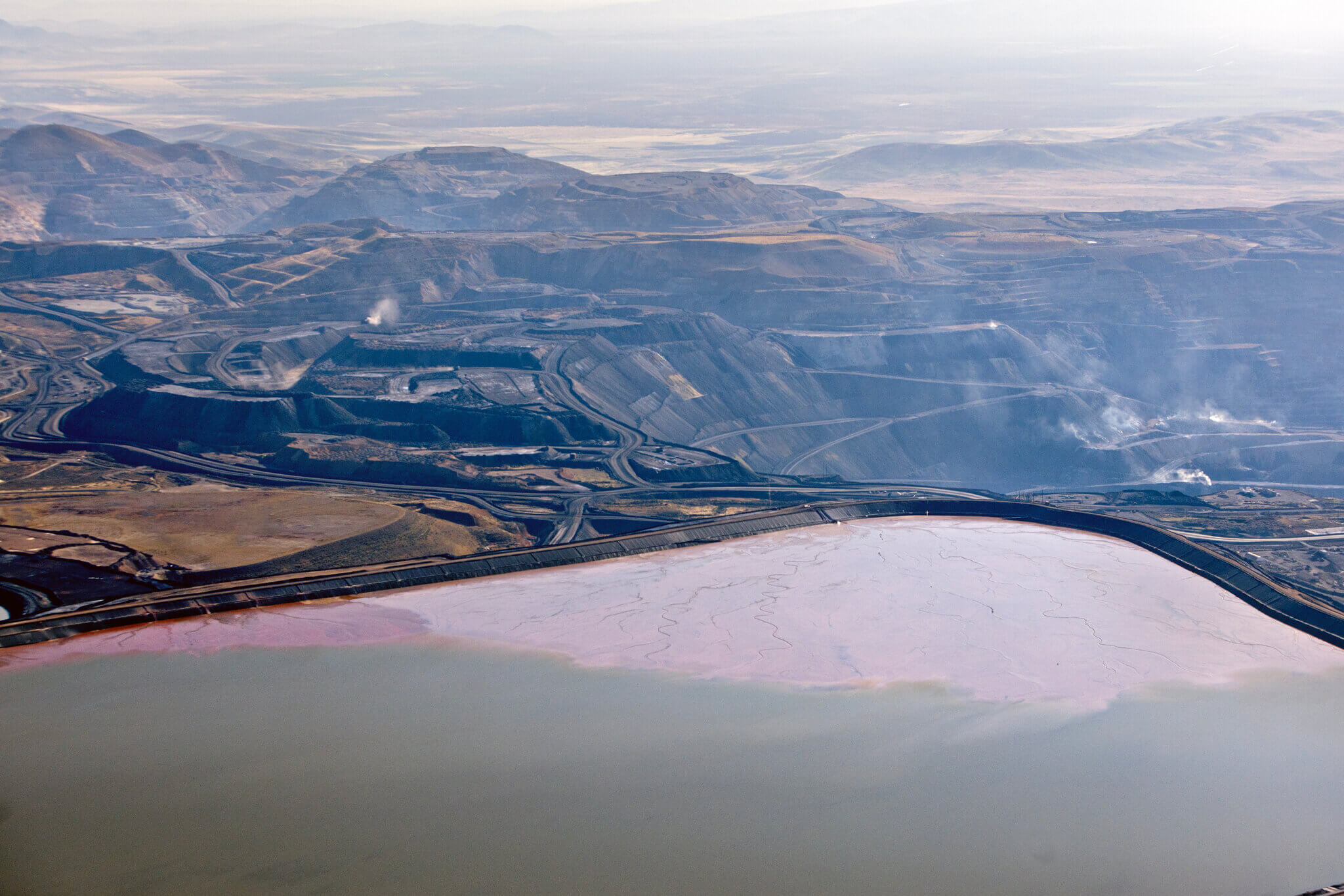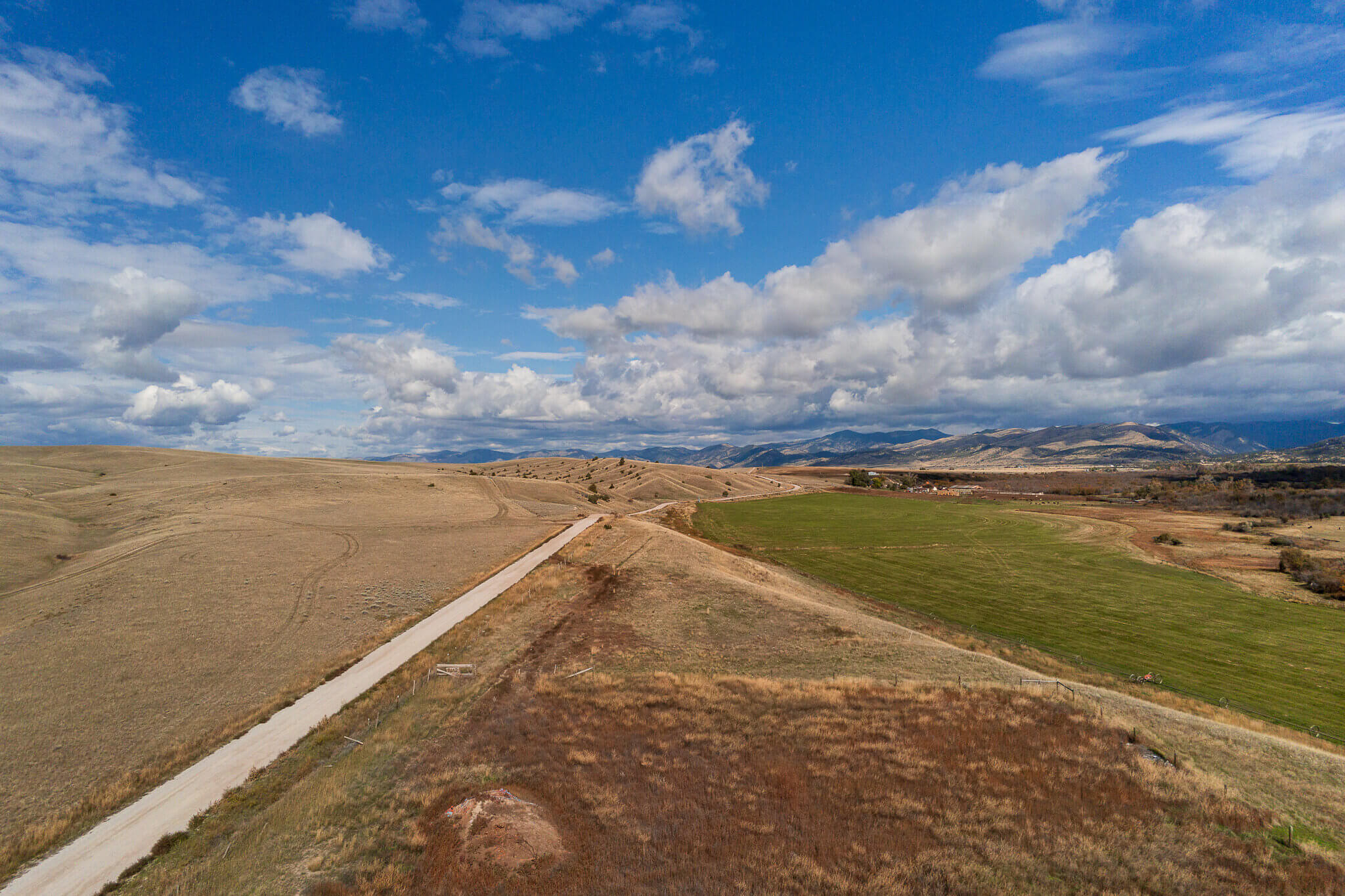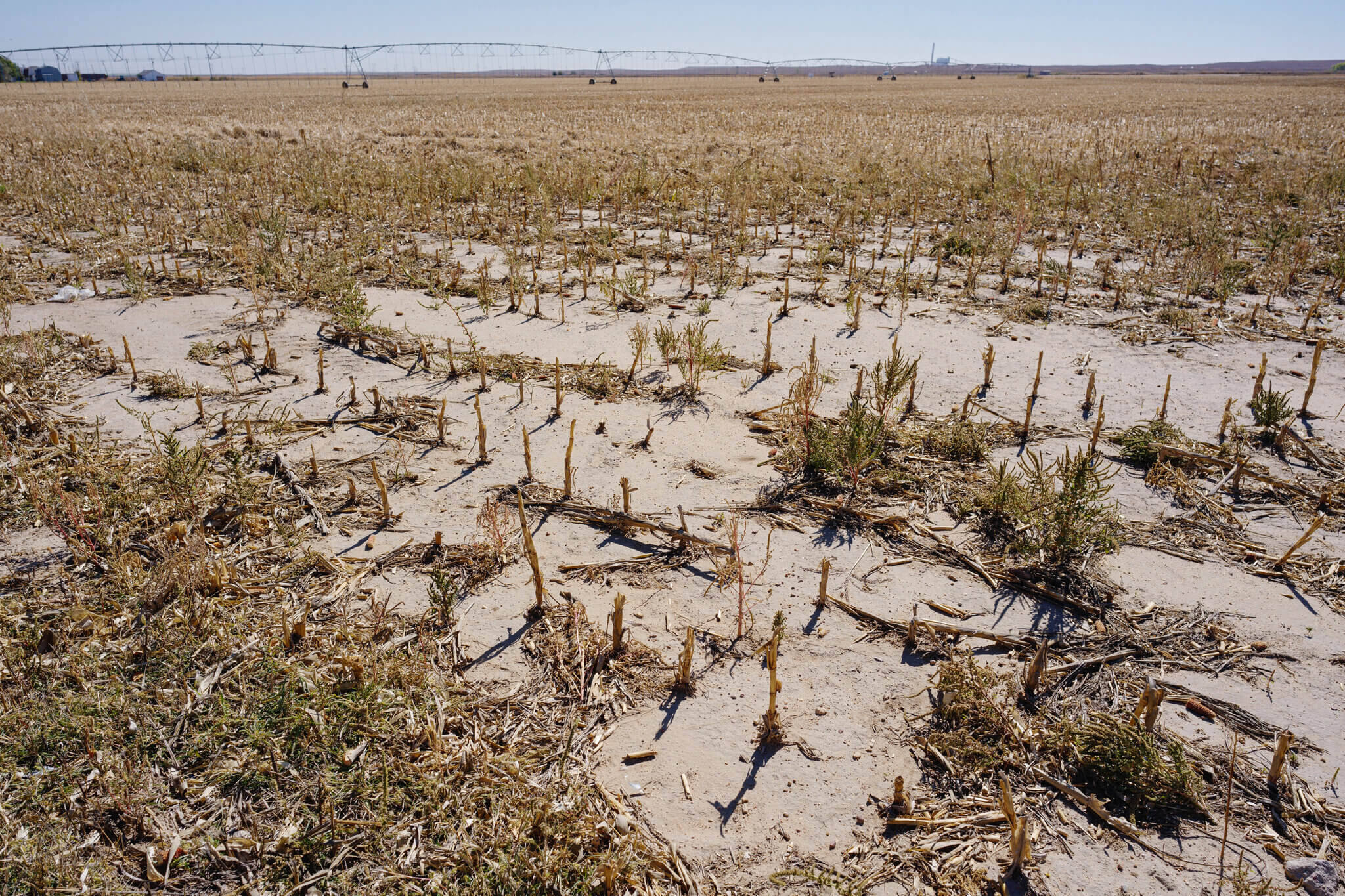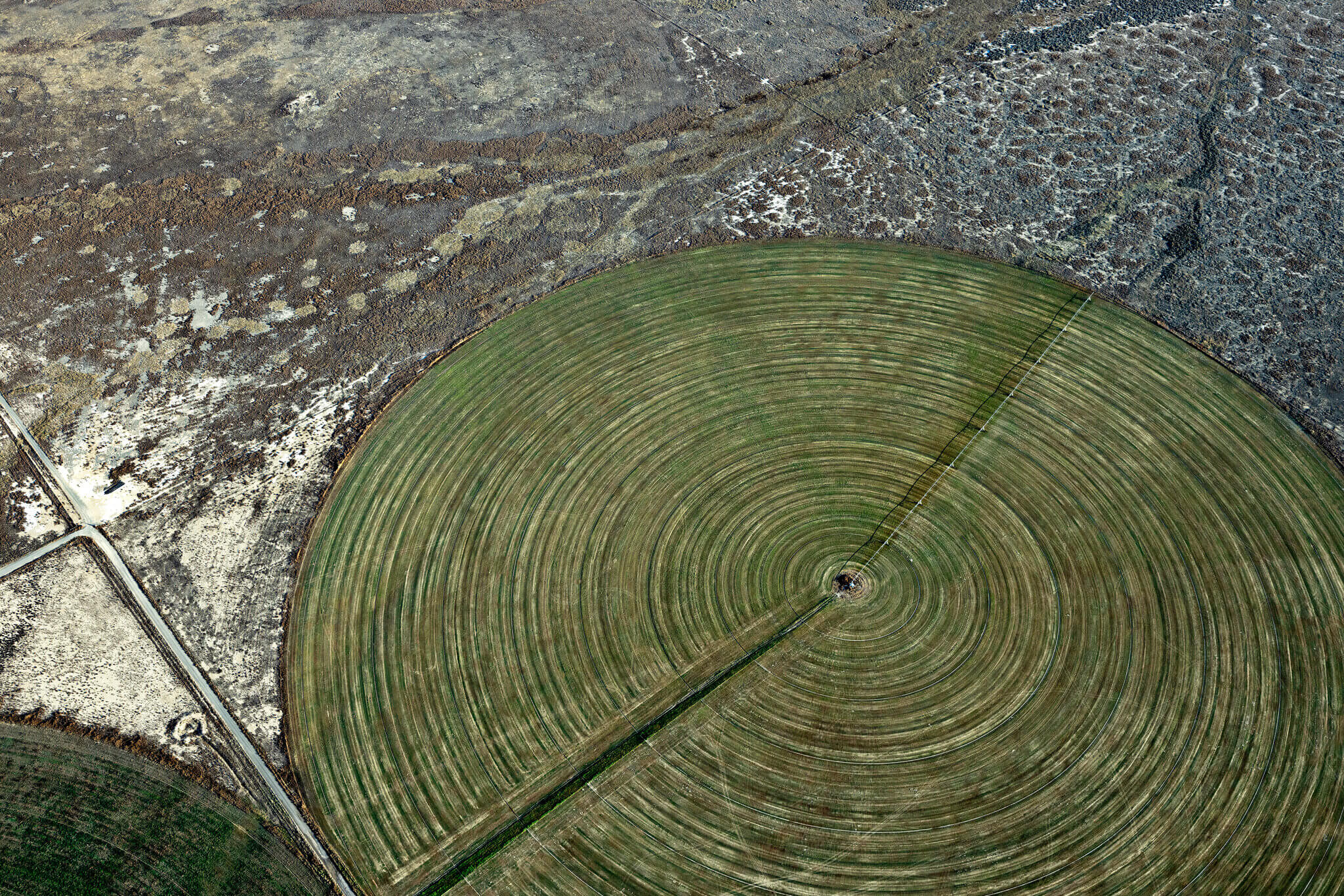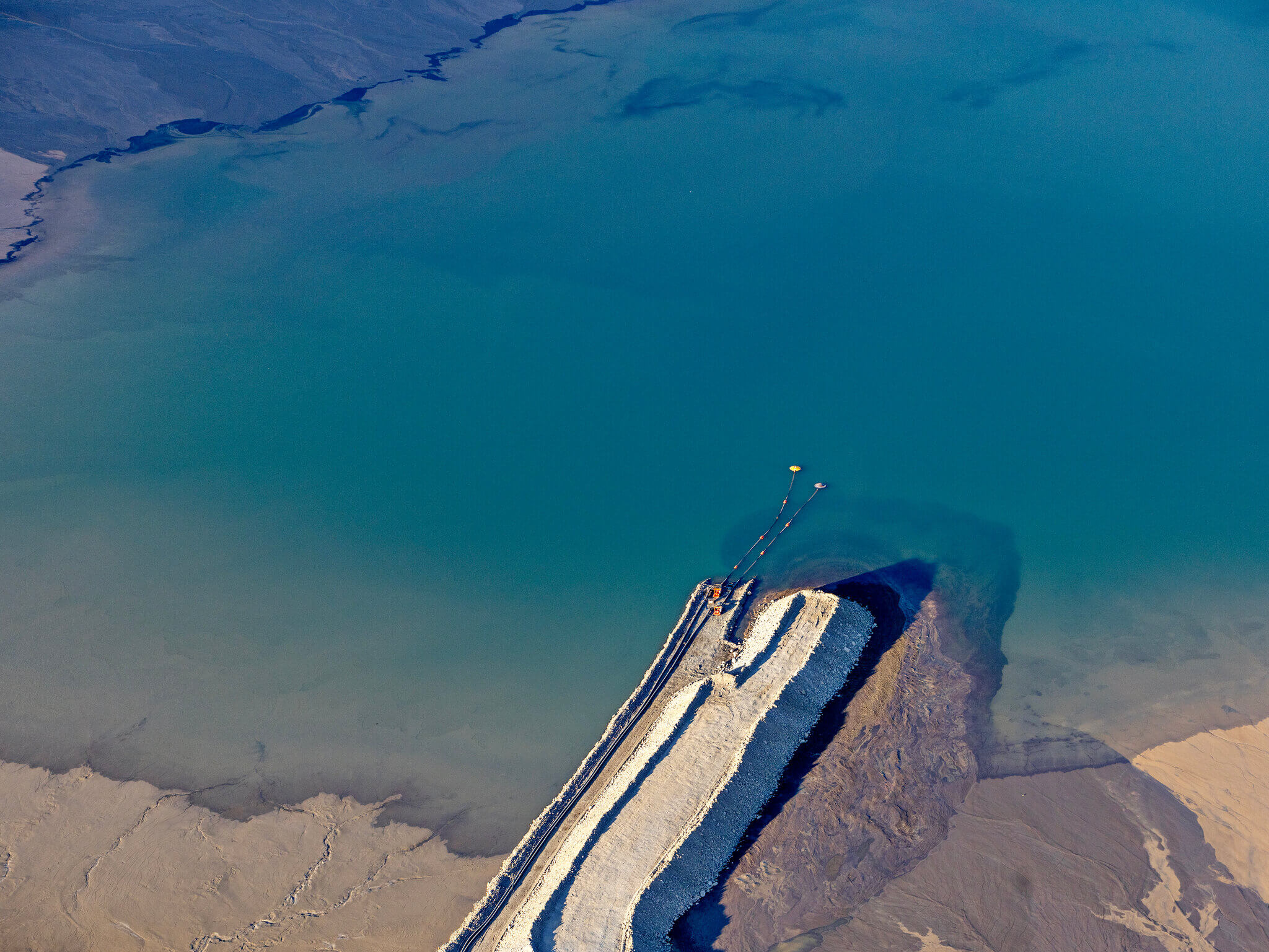By Christopher Flavelle | Produced by Claire O’Neill, Matt McCann and Umi Syam | Edited by Lyndsey Layton and Douglas Alteen | Research contributed by Julie Tate | Nov. 24, 2023 | New York Times
Some of the people fighting efforts to conserve a vital resource that’s disappearing across the United States include the owners of the largest gold mine in Nevada, a political dynasty that controls a huge swath of Montana, and a handful of powerful Kansas farmers.
From a small brick building in Garden City, Kansas, 13 men manage the use of groundwater across five million acres in the southwest corner of the state, some of the most productive farmland in America for corn, wheat and sorghum.
They serve on the board of Groundwater Management District 3, which since 1996 has overseen the pumping of 16.2 trillion gallons of groundwater — enough to fill Lake Mead, the country’s largest reservoir, twice over.
The board is elected, but not by everyone: The only people eligible to vote are large landowners, a group of less than 12,000 people in an area of roughly 130,000. And in some years, fewer than 100 people actually vote. Others — cashiers at Walmart, teachers at the community college, workers at the local St. Catherine Hospital — have no say in the management of the aquifer on which they, too, rely.
The aquifer is running out of water, fast. But the board hasn’t slowed down the pumping.
In a country where the value of land often depends on access to water, powerful interests in agriculture, heavy industry and real estate draw vast amounts of water out of the ground. For generations, that water has been treated as an unlimited resource in much of the United States, freely available to anyone who owns a piece of land and can drill a well. Entire local economies have been built around the assumption that the water will never run out.
Now it is starting to run out, not only in Kansas but across much of the country. From Maryland to Hawaii groundwater levels are falling, often the result of overpumping and underregulation, made worse by climate change. As the planet warms, demand for water is increasing. At the same time, increased evaporation, as well as decreased precipitation in some places, means that less water is refilling the aquifers, accelerating their decline.
“If we don’t make change, we’re not going to have water,” said Lindsay Vaughn, a state lawmaker in Kansas who has tried to curtail pumping in her state.
But change is being actively resisted by many of the agribusinesses, multinational companies and big landowners who depend on enormous amounts of water. They say that reducing groundwater access strikes at the heart of local and regional economies. It also strikes at their bottom lines.
“You lose land value, you lose tax base, and quite frankly you lose the way of life,” said Joe Newland, president of the Kansas Farm Bureau.
In reporting around the country, the New York Times found that the struggle is intensifying between those who benefit from pumping large amounts of groundwater and those who see it as a looming catastrophe.
Water and Gold in Nevada
Adam Sullivan has one of the most powerful jobs in Nevada. His title is state engineer, which means he decides who gets water in a state that gets less rainfall than any other, and where groundwater levels are sinking rapidly.
But Christina Erling has a different kind of power.
Ms. Erling is vice president of North American government affairs for Barrick Gold Corporation, one of the world’s largest gold mining companies. Based in Canada, Barrick and its joint venture, Nevada Gold Mines, accounted for about three-quarters of the gold produced in Nevada last year, including at Goldstrike, the largest gold mine in North America.
Barrick, along with its joint venture, has made $1.7 million in campaign contributions since 1994, according to data from Open Secrets, a nonprofit group that tracks political donations. That makes it one of the state’s largest corporate political donors.
To keep pits and mine shafts dry, and also to process ore, Barrick pulls huge volumes of water out of the ground. The Goldstrike mine alone consumed 3.4 billion gallons of water last year, according to company documents.
In May, with Nevada facing increasingly severe water problems, a state legislative committee was considering a proposal backed by environmentalists and water managers that would have made it harder in some parts of the state to get new permits to pump water.
It would have strengthened Mr. Sullivan’s authority to reject applications that he viewed as unsustainable.
Ms. Erling testified at the committee meeting, expressing deep concern. She told lawmakers that “massive investments” had been made based on existing Nevada water law and that “massive pieces of our economy have grown up around those investments.”
The committee, made up of five lawmakers who had each received campaign contributions from Barrick or its joint venture, killed the legislation. State Senator Julie Pazina, the panel’s chairwoman, said in an email that “the stakeholders on both sides of the bill were simply unable to come together.” She added: “Any insinuation that a contribution impacts how I evaluate legislation before me is ludicrous.”
Barrick declined to make Ms. Erling available for an interview. Michael McCarthy, the company’s general counsel for North America, said Barrick supported the idea of protecting groundwater, but the legislation would have changed state water law too quickly and without enough consultation with his company.
“We have livelihoods really at stake,” Mr. McCarthy said, adding that he didn’t think Barrick’s political donations had played a role in the decision to kill the legislation.
Others said the failure to regulate groundwater more aggressively reflected the power of mining companies. Groundwater levels near Barrick’s biggest mine have dropped by hundreds of feet in the past two decades.
“The mining industry gets very favorable treatment from the state government,” said Michael H. Taylor, a University of Nevada economist.
Patrick Donnelly, Great Basin director at the Center for Biological Diversity and one of the advocates for the proposed legislation, was more blunt. “You don’t succeed politically in this state,” he said, “if you’re going to defy mining.”
Building Homes in Montana
Travel east from Helena, the capital of Montana, and it’s not long before you’re in Galt country.
For decades, the Galt family has been a force in Republican politics, as well as one of the state’s biggest private landowners, with ranches that span more than 250,000 acres. Three generations of Galts have served in the statehouse, including Wylie Galt, who until January was speaker of the Montana House of Representatives. His uncle, Bill Galt, monitors his sprawling Galt Ranch by helicopter in a manner that some say inspired the Dutton family of the drama series Yellowstone.
Now Wylie Galt’s father, Errol Galt, plans to construct 39 homes near a lake in Broadwater County, where ranches dot the foothills of the Big Belt Mountains. Elk and the occasional moose wander the fields; cows rest beneath the cottonwoods that grow along winding creeks. Golden-hued grasses cover the hills, making them look like they’ve been draped in velvet.
One thing spoils the idyll: There isn’t enough water.
Average temperatures in Montana increased at least 2.7 degrees Fahrenheit since 1950. That means less snow falling on mountains; less snowpack means less water reaches the streams that run into the valleys below. Water levels in many of the wells across Broadwater County have been declining in recent years, data gathered by the Times shows. In Confederate Creek, which loops past Mr. Galt’s proposed development site, the trout population is dropping, suggesting an ecosystem in decline.
Montana has declared this area a “closed basin,” meaning there isn’t enough surface water, like rivers and lakes, for new users. The proposed new homes would get water by drilling wells, potentially causing older wells to run dry, experts warn, and further depleting the dwindling creeks and springs.
Yet the state approved Mr. Galt’s proposal without requiring an analysis of the impact on the water supply. That’s because Montana exempts domestic wells from its standard permit process, a loophole, critics say, that developers are increasingly exploiting to build not just individual homes, which the provision was intended for, but subdivisions to meet a booming demand for homes.
Brad Dundas, whose ranch along Confederate Creek has been in his wife’s family for more than a century, has joined his neighbors to sue the state over the proposed Galt subdivision. The lawsuit argues that the developers should have been required to test whether new wells would hurt local water resources, and if so, find other sources of water. A trial is set for February.
On a recent morning, Mr. Dundas stood at the edge of his property, explaining his concern about the new homes. He pointed to wetlands on his property that are drying up. “When we first got here, you couldn’t even get across there because it was so swampy,” he said. “You can walk right through there now.”
Mr. Galt’s project is not a huge subdivision, but if he prevails in court, it could lead to many more homes being built in areas without enough water to support them, said John Tubbs, the former director of the state’s Department of Natural Resources Conservation, which regulates water rights. Mr. Tubbs now serves on the board of Upper Missouri Waterkeeper, an environmental group that is helping to fight the development.
Errol Galt, who is a former chairman of the Montana Fish and Game Commission, declined to comment.
The pressure to tap groundwater for development in rural areas will only grow, said Eugene Graf, president of the Montana Building Industry Association, which represents homebuilders. The industry is booming: The median house price in Montana has doubled since 2015.
If Montana imposed stricter groundwater requirements on homebuilders, it would force them to spend more money to obtain permits and maybe also to find other sources of water, driving up their costs and eating into profits, Mr. Graf said.
State lawmakers are unwilling to tighten groundwater rules because of the power of the homebuilders, said Guy Alsentzer, executive director of Upper Missouri Waterkeeper,
“There’s a lot of money coming into Montana that’s focused on residential development right now,” he said. “And money talks.”
Growing Corn in the Kansas Drylands
In Kansas, the power of the men who run Groundwater Management District 3 is enormous. Even though the district is in the driest part of Kansas, with an aquifer in dramatic decline, it accounts for half of all groundwater extracted statewide.
Pressure is rising for change. State officials and experts want farmers and other users to pump less, noting that other districts have reduced water use through more efficient irrigation techniques and new technology. So far, the leaders of District 3 have refused to impose changes.
Many of the landowners eligible to vote in district elections live elsewhere, renting out their farms but retaining control over water policy, said Lucas Bessire, an anthropology professor at the University of Oklahoma who wrote a book called Running Out about the depletion of the aquifer beneath southwest Kansas.
Lindsay Vaughn, the 29-year-old state lawmaker who is leading efforts to tighten groundwater regulations, comes at the problem with the perspective of someone who could see the aquifer run dry in her lifetime.
“If we don’t do anything differently, then there won’t be enough water left for people in my generation,” said Ms. Vaughn, who represents a Kansas City suburb.
Last year, Ms. Vaughn, the top Democrat on the state’s water committee, tried to open elections for groundwater management districts to all local residents, part of a broader package of reforms.
Her proposal was blocked by Mr. Newland, a Republican lawmaker at the time, who raises crops and cattle. Soon after, Mr. Newland became president of the Kansas Farm Bureau, the lobbying powerhouse for agriculture.
In an interview, Mr. Newland said that people who live in towns and cities don’t understand the value of groundwater to farming and would elect members to the district board who would cut water use. That would decrease the value of farmland, he said.
Mark Rude, the water district’s executive director, defended restricting control of groundwater to large landowners. “It works pretty darn good for people that are invested in the land,” he said.
This year, Ms. Vaughn introduced new legislation that requires the state to ensure that water districts better protect their aquifers. Groups like Groundwater Management District 3 have until 2026 to come up with plans to sustain groundwater. If they fail to develop those plans, or if state officials decide the plans are inadequate, the state can impose its own plan and compel farmers to cut back on pumping.
That bill became law, evidence of the growing recognition that Kansas faces a crisis, Ms. Vaughn said. But she voiced concern about whether political appointees in state government will enforce the law, given the clout of the agriculture lobby.
“We can come together and use the tools that we already have to slow depletion,” Ms. Vaughn said. “Or we can be left in the dust. The choice is ours.”
It Just Has to Get Really Bad
In much of the country, groundwater is being withdrawn faster than it can be replaced, a problem that states are struggling to address. And, as a New York Times investigation this summer found, the result has been declining water levels in nearly half the sites for which data is available.
The federal government plays no role in regulating groundwater extraction, leaving that to individual states, but a growing number of advocates and experts say Washington must intervene to protect the country’s depleting aquifers.
Upmanu Lall, director of the Columbia Water Center at Columbia University, said the federal government should set minimum requirements for groundwater conservation, then step in when states fail to enforce those requirements, much like the Environmental Protection Agency’s approach to drinking water quality.
“The way we’ve been doing business cannot go on,” Dr. Lall said.
Ali Zaidi, the national climate adviser to President Biden, declined to directly say whether the federal government should take on groundwater supply.
The reluctance to talk about groundwater regulation isn’t surprising, according to Representative Jared Huffman, Democrat of California, a former attorney for the Natural Resources Defense Council and onetime director of the Marin Municipal Water District.
“They regard this as a hot stove they don’t want to touch,” said Mr. Huffman, the ranking member on the House Subcommittee on Water, Wildlife and Fisheries.
That’s because many Americans view the water under their land as “this domain of individual liberty, that nobody wants the federal government, or even the states, to have authority over,” he said in an interview.
“It just has to get really bad,” Mr. Huffman added, “before something like that happens.”
Part of a series on the causes and consequences of disappearing water, this article originally appeared in the New York Times on Nov. 24, 2023. Photos by David Robert Elliott, Matthew Hamon and Kim Raff for the New York Times.


